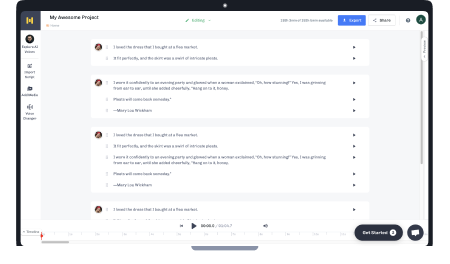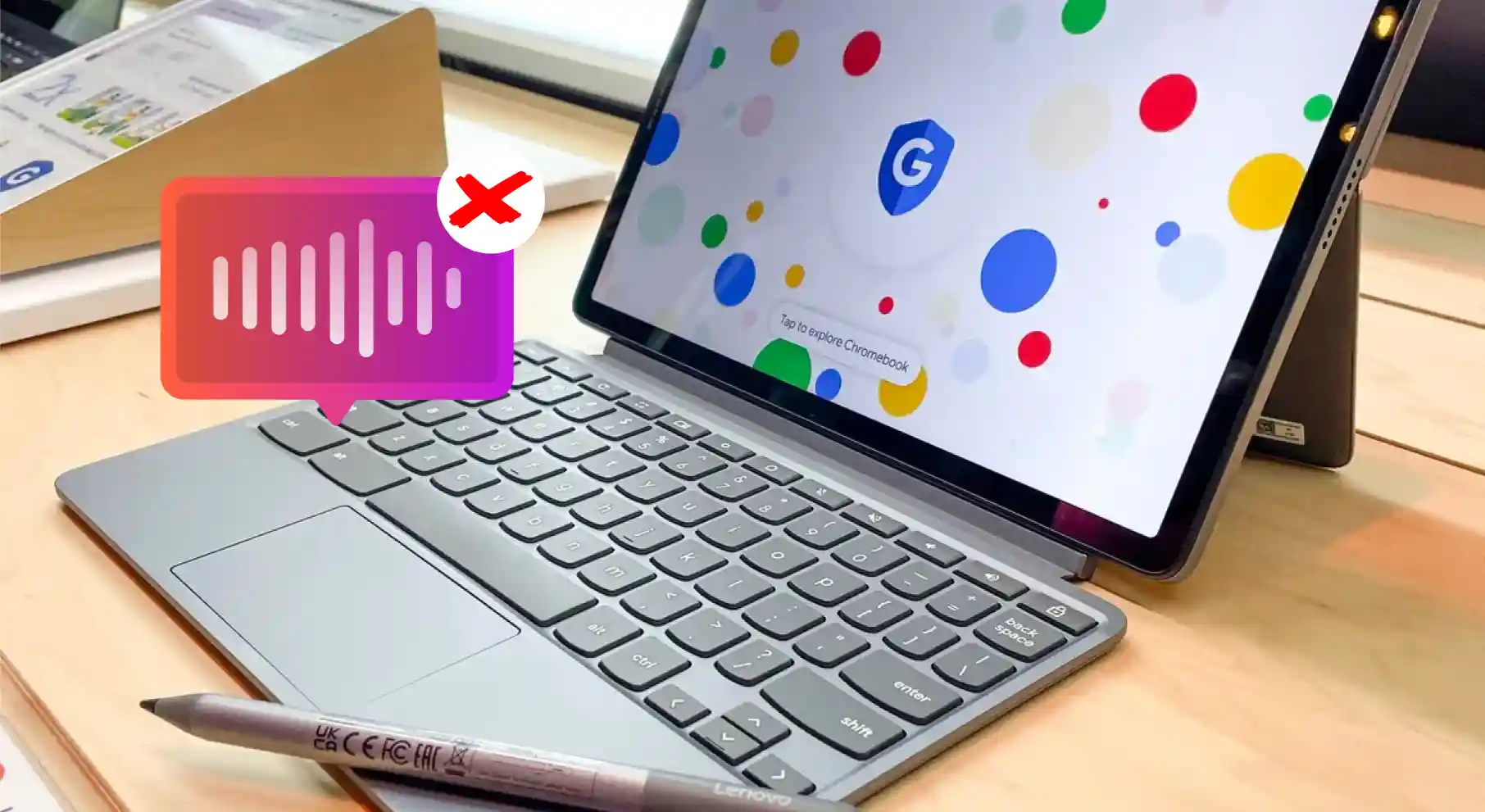Transform Your eBooks into Audiobooks

Imagine a world where your favorite stories come to life. This isn’t just a fantasy anymore; it’s the reality of converting eBooks into audiobooks. In an age where multitasking has become the norm, audiobooks offer a convenient and engaging way to consume literature. The benefits of this transformation are not just limited to convenience.
According to a report by Publish Drive, converting eBooks to audiobooks can significantly boost revenue for authors, tapping into a market of listeners who prefer audio over text. This increases profitability but also expands the reach of the content to a broader audience, including those who might find reading challenging or time-consuming.
But how does one turn an eBook into an audiobook?
The audiobook production process, often perceived as complex, is becoming increasingly straightforward with advancements in technology. Tools and platforms that simplify this process are emerging, making it accessible even to those without any technical expertise. The solution lies in choosing the right method and tools that align with your goals, whether it’s reaching a broader audience, enhancing accessibility, or simply giving your eBook a new, audible life.
Benefits of Converting an eBook into an Audiobook
.webp)
The transition from eBooks to audiobooks represents a significant shift in how we consume literature. Kindle reader is one of the best example to this feature. This change is not just a trend but a response to readers’ evolving needs and preferences worldwide. Let’s delve into the benefits of this transformation.
Increased Accessibility
Audiobooks can be a boon for those with visual impairments, reading disabilities, or those who find reading text challenging. By converting eBooks into audiobooks, content creators and authors can reach a broader audience, ensuring that their work is inclusive and accessible to all.
Multitasking
In today’s fast-paced world, multitasking has become a necessity. Audiobooks fit perfectly into this lifestyle. They allow listeners to enjoy their favorite books while engaging in other activities, such as exercising, commuting, or even performing household chores. This multitasking capability is not just a convenience; it’s a way to optimize time and enhance productivity.
On-the-Go Convenience
The portability of audiobooks makes them an ideal companion for people on the move. Whether you’re traveling, running errands, or simply moving from one place to another, audiobooks provide a seamless and uninterrupted literary experience. This on-the-go convenience has contributed significantly to the growing popularity of audiobooks.
Time-Saving
Audiobooks offer an efficient way to consume books faster than traditional reading, as listeners can choose the pace at which the book is narrated. This time-saving aspect is particularly appealing to busy professionals and students.
Narrative Experience
Audiobooks can bring a book to life, adding depth and emotion to the story. This enhanced narrative experience can make the story more engaging and memorable, providing a different dimension to the literary work. In contrast, traditional reading lacks this vocal enrichment, potentially missing the nuanced emotional and atmospheric layers that a narrator’s voice can convey, leading to a less immersive experience.
Hands-Free Reading
Lastly, audiobooks allow listeners to enjoy reading without physically holding a book or an e-reader. This feature mainly benefits people with physical limitations or who simply prefer a more relaxed and comfortable reading experience.
How Can Text to Speech Enhance the Audiobook Experience?
Text to speech has revolutionized the audiobook industry, offering a range of features that make the process of creating audiobooks quicker and enhance the listening experience. Let’s explore how these advancements are making audiobooks more engaging and accessible.
Customization of Voices
One of the standout features of TTS software is the ability to customize voices. TTS technology offers a variety of voice options, ranging from different accents to varying tones and pitches. Such customization allows for a more personalized audiobook experience, where the listener can choose a voice that resonates with them or fits the mood of the book. This level of customization is not just about preference; it can also aid in better understanding and enjoyment of the content.
Multilingual Support
TTS technology breaks language barriers by providing multilingual support across 20 languages, including Russian text to speech, Arabic, French text to speech. This feature is particularly beneficial for listeners more comfortable in languages other than English or for books with a global audience. Multilingual support ensures that audiobooks are accessible to a diverse listener base.
Experimental Narration
TTS software opens up possibilities for experimental narration. Unlike traditional audiobooks, which rely on a single narrator, TTS can mix and match different voices for different characters or sections of a book. This can create a more dynamic and engaging listening experience akin to a radio drama or a multi-cast performance.
Incorporation of Sound Effects
Some TTS platforms allow the incorporation of sound effects and background music into audiobooks. This feature can bring a story to life, adding an extra layer of immersion. Sound effects enhance the narrative, providing a more cinematic experience and helping set the mood or emphasize certain parts of the story.
Integration with Accessibility Tools
TTS software often integrates seamlessly with various accessibility tools, making audiobooks more inclusive. This integration is crucial for individuals with disabilities, such as visual impairments or reading difficulties. By enhancing the accessibility of audiobooks, TTS software ensures that everyone has the opportunity to enjoy literature.
Convert eBook to Audiobook Seamlessly with Murf
Murf emerges as a standout solution for converting eBooks into audiobooks, offering a range of benefits and features that streamline the process and enhance the final output.
Benefits of Using Murf for Audiobook Creation
- Wide Range of Voices: Murf provides access to over 200 AI voices in more than 20 languages, allowing a diverse range of voice options to suit any genre, character, or story.
- Character Diversity: With Murf, you can assign different voices to various characters in your story, creating a dynamic and engaging listening experience.
- Ease of Use: The process of creating an audiobook with Murf is straightforward. Import multiple ebooks or just one, select your voice, make any necessary edits, and add background music. Your audiobook is ready for publication!
- Quality Control: Murf ensures a consistent audio level throughout the audiobook, eliminating background noise and maintaining professional sound quality.
- Customization Features: The platform offers several customization options, such as adjusting emphasis on words, controlling volume, adding pauses, and changing speech rate to tailor the narration to your specific needs.
- Incorporation of Music and Soundtracks: Especially useful for children’s audiobooks, Murf allows the addition of background music and soundtracks from its library of royalty-free music.
How to Convert eBooks into Audiobook Format Using Murf: A Step-by-Step Guide
Step 1: Upload Your eBook
Begin by importing your docx and pdf ebooks into Murf. This will act as the script to create audiobooks, laying the foundation for the narration process.
Step 2: Choose the Right Voice
After uploading your eBook, select from over 200 realistic AI voices in 20+ languages. For instance, pick Julia for an upbeat and energetic tone or Theo for a deeper, more resonant voice. At this stage, you can also emphasize certain words and incorporate pauses to convey the right emotions.
Step 3: Select Language and Accent
Choose the appropriate language and accent to match your audience. For example, select ‘Australian English’ for an eBook intended for an Australian audience.
Step 4: Step 4: Customize Voice, Style, and Add Effects
In this step, tailor the voice settings to match the tone of your book. Adjust the speed and pitch of the voice for different scenes. For example, slow down the narration for a dramatic effect or alter the pitch to distinguish between characters. Additionally, experiment with various styles for the same voice, such as using a ‘calm’ style for serene scenes and switching to ‘enthusiastic’ for more dynamic parts.
To further enhance your audiobook, add background music or sound effects from Murf’s extensive royalty-free music library, giving your narration an extra layer of engagement and depth.
Step 7: Review and Edit
Review and edit your narration for any final adjustments using Murf’s user-friendly interface. Preview the audio and make the necessary changes.
Step 8: Export and Share
Once finalized, export your audiobook in MP3, FLAC, or WAV audio format and share it with your audience.
Elevating Literature in the Digital Age
Transforming an eBook to an audiobook is a game-changer in the literary world. Audiobooks offer unparalleled accessibility and convenience, allowing stories to reach a broader audience. Murf stands at the forefront of this revolution, providing an intuitive platform for converting eBooks into engaging audiobooks in different audio formats. Its diverse range of voices, multilingual support, and customization options ensure that each audiobook offers a unique and immersive experience.
For those looking to explore the potential of audiobooks, Murf offers a free trial, allowing you to experience firsthand the ease and effectiveness of its features. Embrace the future of storytelling with Murf and see how it can transform your reading experience, connecting you with audiences in a whole new way.

Frequently Asked Questions
Can I turn my ebook into an audiobook?
.svg)
Yes, you can turn your eBook into an audiobook using text to speech, which converts written text into spoken words. TTS platforms like Murf offer this capability, allowing you to select from a range of realistic voices in multiple languages to create a professional-sounding audiobook.
What app converts ebook into audiobook?
.svg)
Several text to speech applications like Speechify, NaturalReader, and Resemble AI can convert ebook formats to audiobook.
Why should I convert my ebook into an audiobook?
.svg)
Converting your eBook into an audiobook can significantly expand your audience reach. Audiobooks cater to listeners who prefer listening to audio over text, including those who are visually impaired or enjoy multitasking. This conversion can also increase accessibility and add a new dimension to your content.
How does Murf ensure the quality of the converted audiobook?
.svg)
Murf uses advanced AI technology to convert text to audio, producing natural, high-quality voiceovers. You can export your audiobooks in MP3, FLAC, WAV, and other audio formats.
Can I customize the voice in my audiobook using Murf?
.svg)
Yes, with Murf, you can customize the voice in your audiobook by choosing your favorite voice in the language and accent of your choice, selecting the voice style, and fine-tuning the voice by changing voice parameters like speed, pitch, pronunciation, and more.
What formats of ebooks can be converted into audiobooks using Murf?
.svg)
Murf supports formats such as TXT, DOCX, and PDF. So, ebooks in these file formats can be easily converted into audiobooks.
Can I convert ebooks in languages other than English using Murf?
.svg)
Yes, Murf can convert eBooks into audiobooks in more than 20 languages. This includes commonly spoken languages such as English, Spanish, French, German, and Mandarin, among others. This wide range of language options allows for creating audiobooks catering to a diverse global audience.
Can I use Murf to convert an ebook to an audiobook for commercial purposes?
.svg)
Yes, you can use Murf to convert an eBook to an audiobook for commercial purposes. Murf also offers users the license to use the audio file on any platform.















